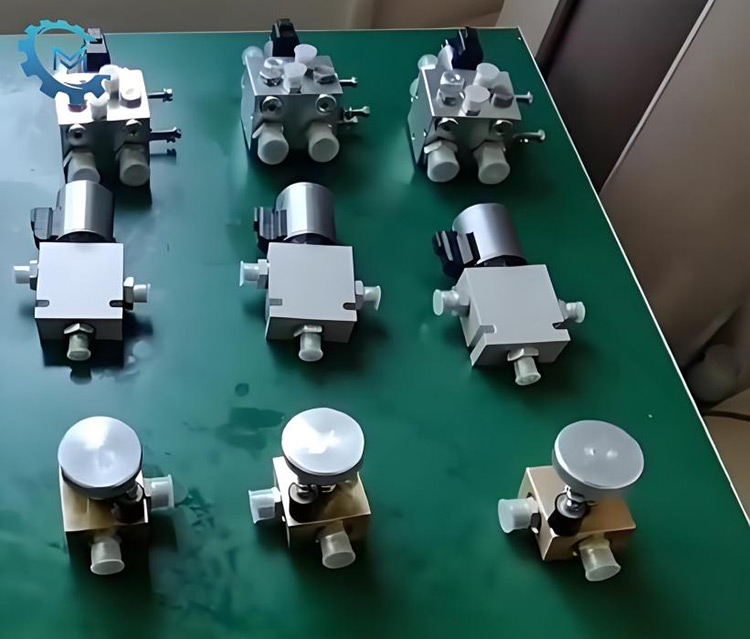- English
- Español
- Português
- русский
- Français
- 日本語
- Deutsch
- tiếng Việt
- Italiano
- Nederlands
- ภาษาไทย
- Polski
- 한국어
- Svenska
- magyar
- Malay
- বাংলা ভাষার
- Dansk
- Suomi
- हिन्दी
- Pilipino
- Türkçe
- Gaeilge
- العربية
- Indonesia
- Norsk
- تمل
- český
- ελληνικά
- український
- Javanese
- فارسی
- தமிழ்
- తెలుగు
- नेपाली
- Burmese
- български
- ລາວ
- Latine
- Қазақша
- Euskal
- Azərbaycan
- Slovenský jazyk
- Македонски
- Lietuvos
- Eesti Keel
- Română
- Slovenski
- मराठी
- Srpski језик
Installation specifications of hydraulic solenoid valves
2025-06-11
Introduction
As an indispensable key component in the hydraulic system, the installation quality of the hydraulic solenoid valve is directly related to the stable operation and performance of the entire system. With many years of product manufacturing and service experience, we have carefully sorted out the installation specifications of hydraulic solenoid valves.

1.Preparation before installation
Cleaning inspection: Make sure there are no casting sand, iron filings and other impurities inside the valve body. If necessary, flush it with kerosene or special cleaning agent. Check whether the sealing ring is intact to avoid oil leakage after installation.
Oil circuit cleaning: Before installation, pickle and flush the hydraulic system pipeline to ensure that the oil contamination meets the requirements of the valve.
2.Installation location and direction
Correct direction: The arrow mark on the solenoid valve must be consistent with the direction of oil flow to avoid reverse installation causing valve failure. Two-position valves usually have monostable and bistable states, and it is necessary to confirm that the initial position of the valve core matches the system requirements.
Installation posture: Generally, solenoid valves can be installed arbitrarily, but the solenoid coil must be perpendicular to the ground to avoid the valve core being stuck due to gravity or water entering the coil. Large solenoid valves need to be fixed with brackets to reduce the impact of pipeline vibration on the valve.
3.Connection and fixation
Pipeline connection: Pipe connection needs to ensure thread sealing (such as wrapping raw tape or applying sealant) to avoid oil leakage; plate connection needs to ensure the flatness of the bottom plate and tighten the bolts evenly. It is recommended to use metal hoses or bellows for high-pressure pipelines to reduce vibration transmission.
Electrical connection: The wiring must be firm to avoid looseness and poor contact; the wires must be put through protective tubes to prevent wear or oil erosion. Pay attention to the positive and negative poles of DC solenoid valves, and reverse connection may cause the coil to burn.
4.Debugging and trial operation
Manual test: Do not power on first, manually operate the solenoid valve, and check whether the valve core moves smoothly, whether there is any jamming or abnormal noise.
Power-on test: Before the first power-on, confirm that the power supply voltage is consistent with the rated voltage of the solenoid valve to avoid burning the coil. Observe whether the valve core is sensitive to reversing, whether the system pressure and flow are normal, and whether there is any oil leakage or abnormal heating.
Pressure shock control: For high-pressure systems, it is recommended to install a damper or throttle valve in front of the solenoid valve to slow down the pressure shock during reversing.
5.Maintenance and precautions
Regular inspection: Check the appearance of the solenoid valve every week to see if there is oil leakage, looseness or coil overheating (temperature ≤ 70℃). Check the oil contamination every quarter and replace the filter element in time.
Troubleshooting: If the valve core does not move, it may be that the coil is burned, the power supply is faulty, or the valve core is stuck, and each one needs to be checked. If the leakage is serious, it may be that the sealing ring is aging or the valve body is worn, and the parts need to be replaced.
Conclusion
We are a professional manufacturer of hydraulic solenoid valves and can provide you with high-quality products and professional technical support. We believe that as long as you follow the above installation specifications, your hydraulic solenoid valve will be able to operate stably and efficiently. During the installation process, if you encounter any problems, please feel free to contact us and our technical team will serve you wholeheartedly.




